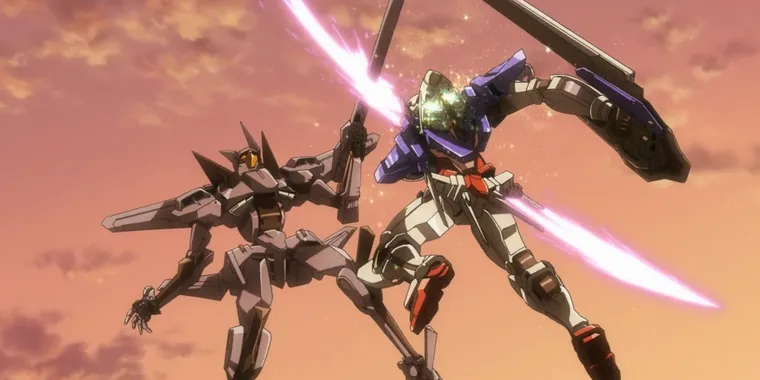For those who’ve mercifully been spared by ramblings on Twitter, let me make a clearing: Gundam is the best franchise on planet Earth. I can’t promise you’d like it — anime is rather specific mode of art, and Gundam’s brand of giant mecha soap opera is a very particular subgenre of it — but what it does right, and has done right consistently since 1979, is a model for how to keep a franchise fresh yet tied to a shared history. The franchise was reinventing itself decades before Abrams came along to reboot Star Trek, and the mixed success of that is the counterexample to Gundam’s ability to rejuvenate itself. (Though perhaps I should have said regenerate; the only other franchise to find a path to staying alive, innovative, and true to itself is that one with the Time Lord.)
That said, I’m not here to talk about Gundam as a whole. No, friends, I’m here to praise one of its most joyous aspects: its battles.
Look, genre fiction battles are all over the place, and stories aren’t made better simply by throwing in a fight. I get that. But so, you see, does Gundam. Where action too often stops the story in many blockbusters, in Gundam, it’s the means it uses to distill and expose the themes and arcs in play. Fights in Gundam are as full of philosophical debate as they are of laser-swordplay.
They’re also ludicrously fun.
And so, without further ado, I bring you, in no particular order (for they are all wonderful), THE BEST GUNDAM BATTLES. I hope it goes without saying that there are gonna be wild amounts of spoilers.
Amuro and Char’s First Final Battle (Mobile Suit Gundam)
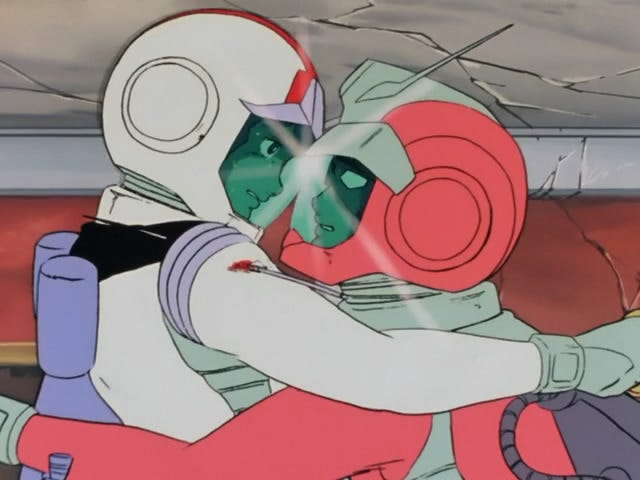
It all started here, in Original Gundam. 0079, as the cool kids call it. Though full of dubious animation and potent 70s hairstyles, Original Gundam is shockingly good once you get past the superficial. Even if you can’t, it’s worth taking a glance at how this humble war melodrama laid down a template that over a dozen series would mutate into their own forms.
The original hero of Gundam was Amuro Ray, and over the next few iterations of Gundam (the Universal Century era; I’ll get to what that means later), he’d be locked in a dance with his ultimate frenemy: Char Aznable. They’d duel again after Original Gundam, but at the time, the end of the series seemed to be their final duel.
And what a duel it was. Or at least, what a duel it ended as. Unlike most of the franchise, the part where Amuro and Char fight in Mobile Suits is a bit of a bore. It doesn’t help that Char’s suit, the Zeong, is just a goofy looking thing, built like a bust of a mobile suit. Luckily, after they finish trashing their suits, they hop out…
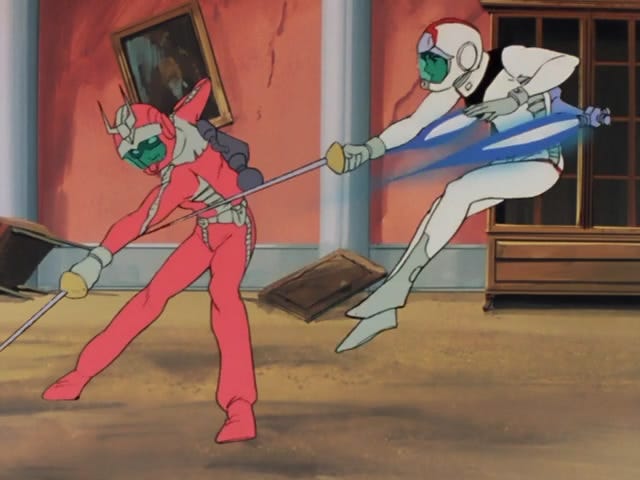
…to fence in zero gravity.
Yes, kind readers, this mecha-powered series about the tragedy of war ends with two dudes pulling out rapiers and flying around on jet packs. It’s glorious, and more importantly, it gets to the heart of why Gundam’s battles are so fantastic. They’re personal. Even when separated by feet of metal (lunar titanium, gundanium, take your pick) and the vacuum of space, these are the culminations of long character rivalries that can only end in…well, in this case, in jetpack sword-fighting.
Over the decades to come, we’ll see many Char-like masked villains, and more Gundams than you can count, but we’ll only get people stabbing through space helmets with epees this one time.
Char, Haman, and Scirocco Within the Colony Laser (Zeta Gundam)
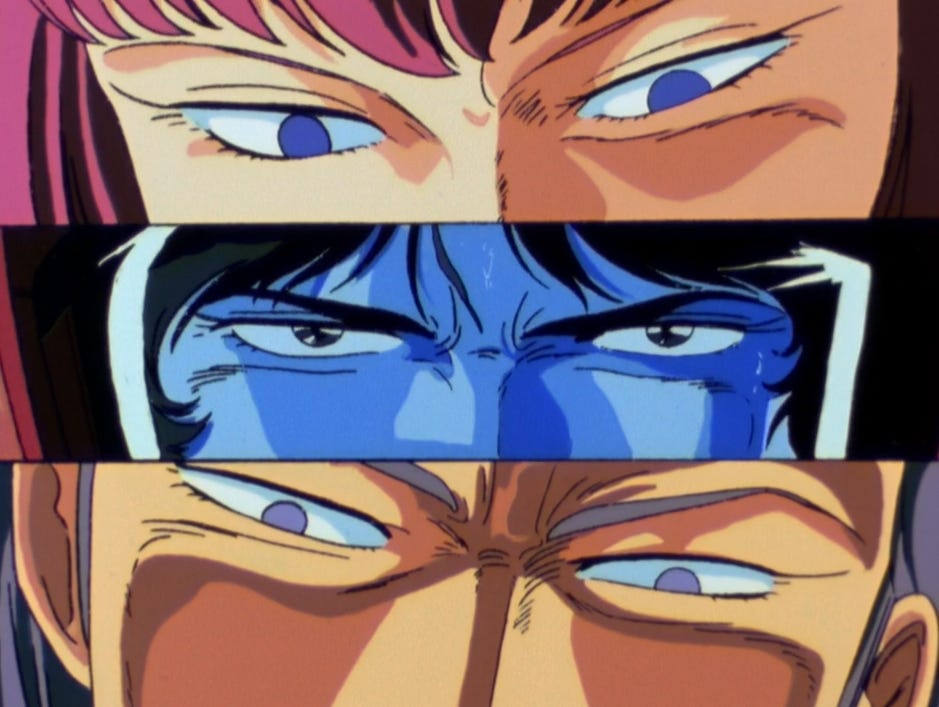
What to do in a sequel but to up the mobile suit ante, right?
There’s a lot about Zeta Gundam, Tomino’s follow-up to 0079, that gets on my nerves. It’s relentlessly bleak, muddily paced, full of dull stalemate battles, and did I mention bleak as hell? That said, there are reasons why this is many (at least old-time fans’) favorite Gundam series. If you decide to check out why, I suggest skipping the series and going for the three A New Translation semi-remakes, which both update a bit of the animation and take the edge off of the black-hearted depression that Tomino later came to regret.
But boy oh boy does it have a doozy of a battle jammed into its conclusion. Char Aznable is back, now going by the name Quattro Bajeena. Take a second to drink that name in. I’ll wait.
Anyway, Char is now with the good guys, since the bad guys are now his old enemies on Earth, now turned full-bore fascist and engaged in literally wiping out the population of entire colonies. The final battle between the evil Titans and the heroic AEUG (which they straight-up pronounce oowwwg) takes place around and inside a Colony Laser. Which is basically what it sounds like it is: a colony…turned into a giant laser. Gundam, I love you.
While the dull actual protagonist is off doing dull protagonist things, Char finds himself battling both Earth’s loose-canon Man From Jupiter, Paptimus Scirocco, and former-lover-turned-ruler-of-his-former-nation, Haman Karn amongst the glowing pillars that power said Colony Laser.
What makes this battle so great is how messy it is. Shifting alliances and old rivalries clash in a three-way brawl in one of the franchise’s most visually arresting locales. It doesn’t hurt that it features three of Gundam’s coolest mobile suit designs. The O, Quebley, and the glorious Hyaku Shiki. Check these suckers out.
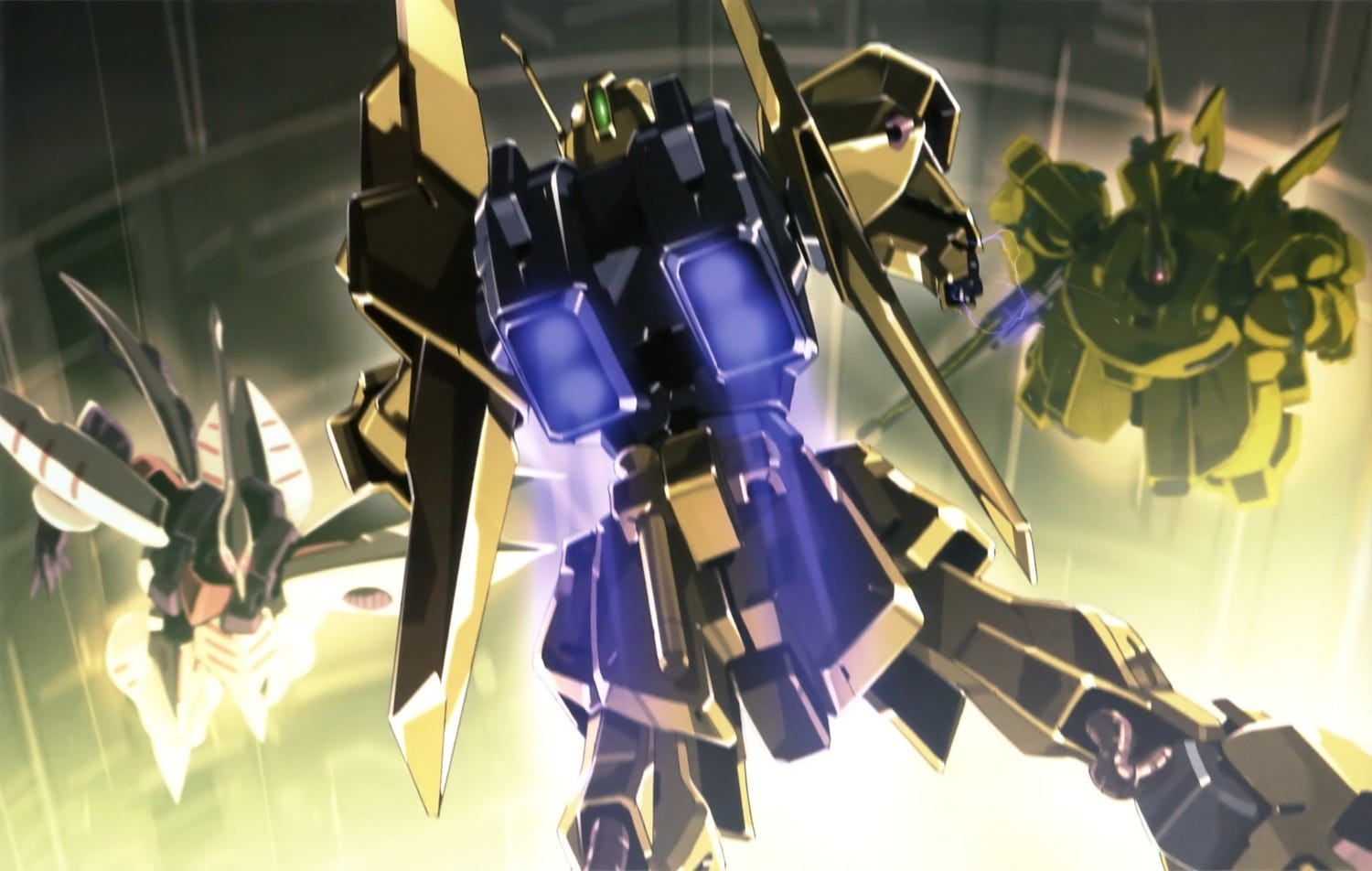
Goofy alias aside, Char was never more awesome than in Zeta Gundam, and though future series would learn that chaos could lead to amazing battles, we’d never get a whirlwind of emotions and visuals quite like this again.
The Gundams Unite One Last Time (Gundam Wing: Endless Waltz)
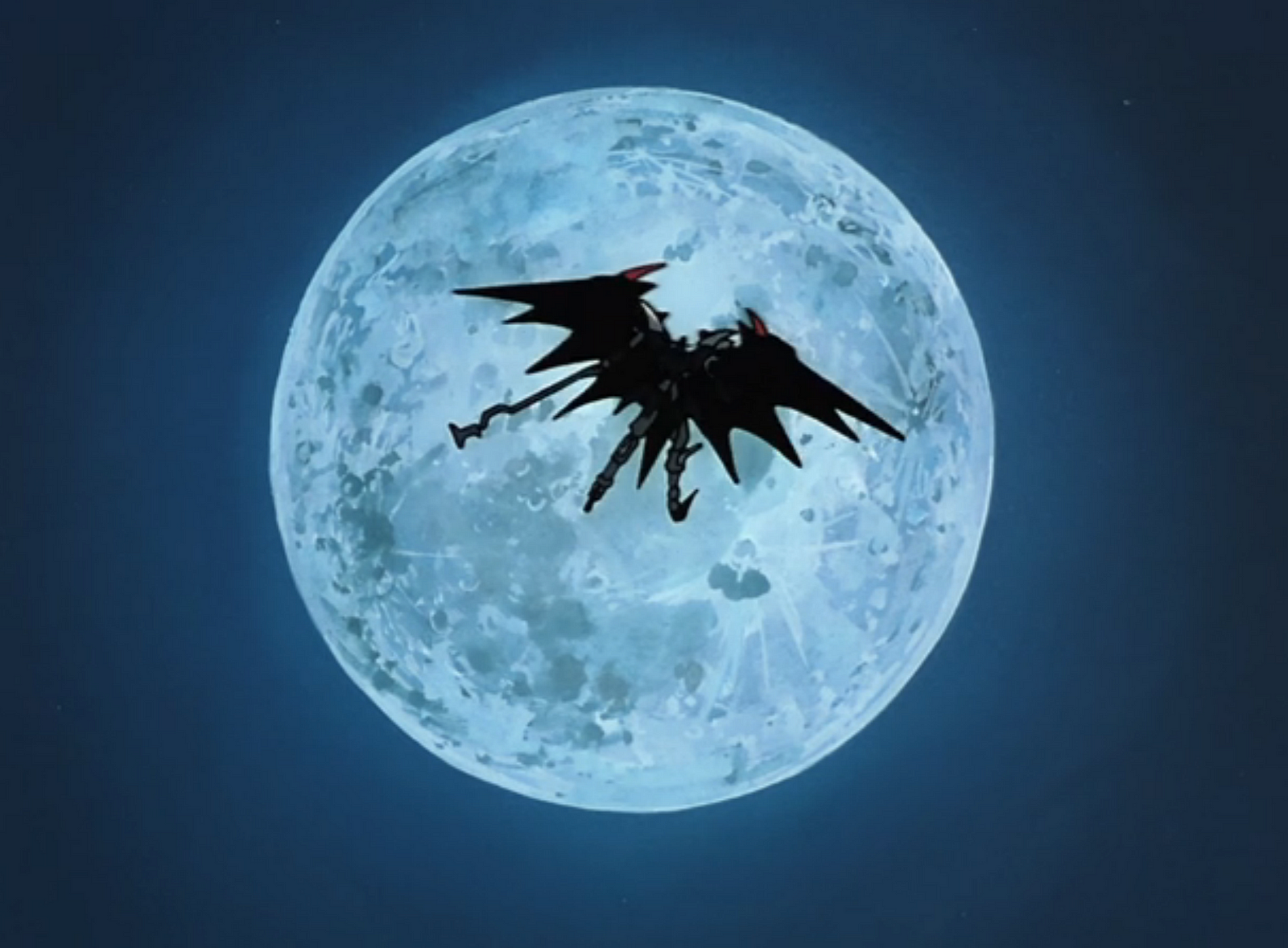
Remember how I said those last two series took place in the Universal Century era? Well, see, one of the things that kept Gundam alive was that it eventually gave up its main continuity and started making re-imaginings set in totally different universes, made by new creators. Rather than try to keep telling stories in a timeline that had seen too many — or play weird games like Abrams’ Star Trek — Gundam decided it would stay true to its themes rather than stay chained to continuity.
Though not the first of these deviations, Gundam Wing was its first total success. Where the UC timeline took its inspiration from war movies, Gundam Wing had way more of a superhero team vibe. Five teenage pilots are given unique, mega-powered mobile suits and sent to Earth to wage a guerrilla war against its oppressive government. Over the course of the series, this seriously melodramatic bundle of joy wove a rather brilliantly convoluted political tale full of arguments over the meaning of war, the plausibility of pacifism, and whether children unfairly trained as soldiers could ever live normal lives.
It was popular enough that it got a follow-up miniseries called Endless Waltz, in which the team reunited to take on…eh, honestly, it’s all so tangled it won’t make sense to explain. Regardless, after struggling to reclaim their lost suits, the whole team (plus a few friends/former enemies) end up surrounded by enemy suits and wage a desperate battle to hold them off. The catch? The pilots are no longer willing to kill, so while their suits could wipe out their enemies easily, they find themselves losing as they restrict themselves to nonlethal attacks.
The fight has all the desperation of a last stand, and concludes with our hero (named Heero, for real) arriving to save the day by…well, shooting a big door, but oh boy is it an awesome visual, and a beautiful catharsis.
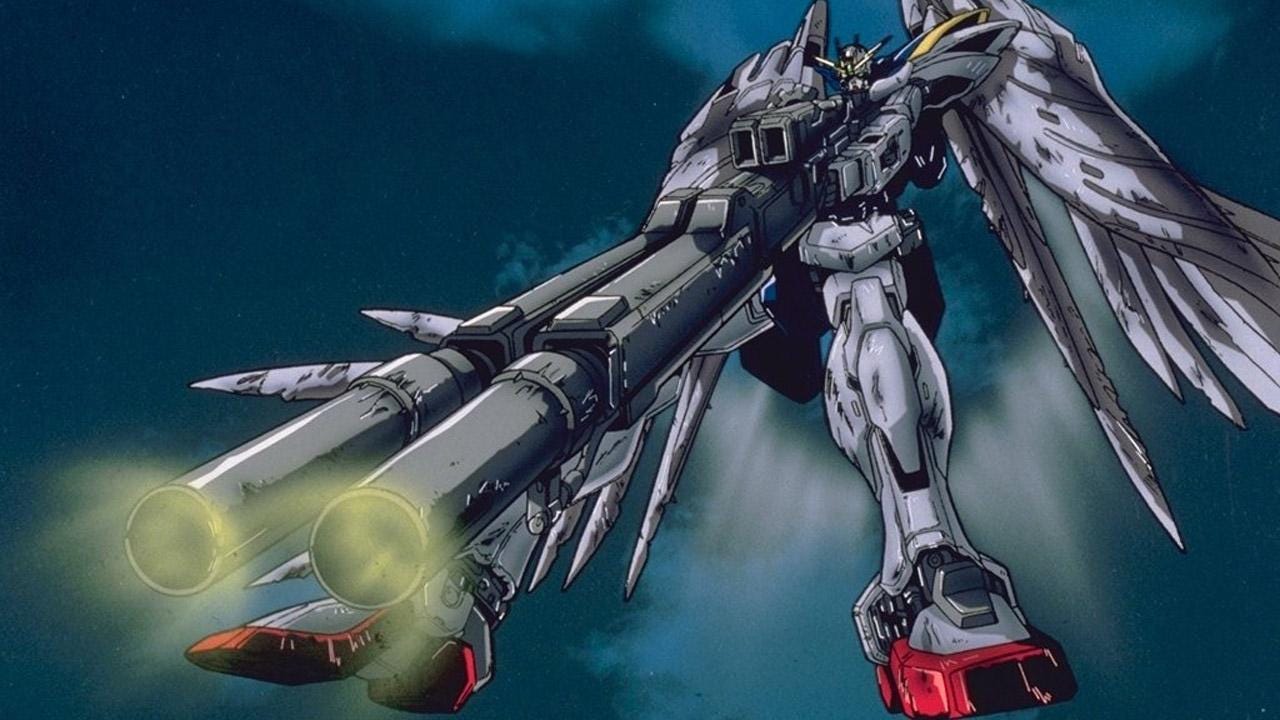
Fight on, pretty Gundam boys.
Battle of the Moonlight Butterflies (∀ Gundam)
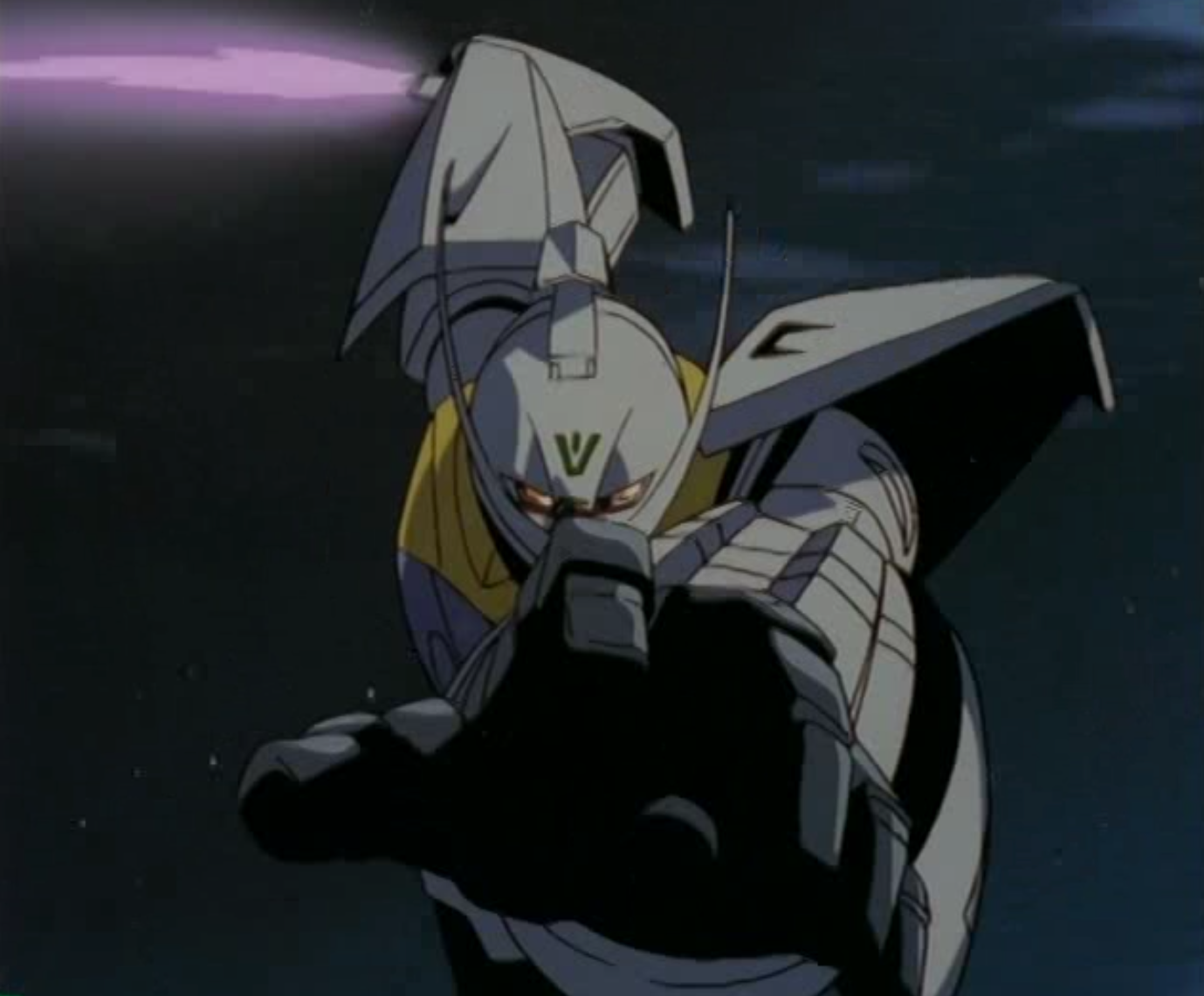
For the 20th anniversary of the franchise, Tomino returned to make a strange beast called ∀ Gundam (or Turn-A Gundam). That upside-down A is a mathematical symbol meaning, basically, “for the entire set”, and represented the series’ attempt to honor everything that had come before, and tell a story where basically everything from every prior Gundam series really and truly happened.
With designs by Syd Mead and music by Yoko Kanno, the aesthetics of Turn A are like nothing else in the franchise, and its plot is in many ways the summation of Tomino’s musings on overcoming the horrors of war.
At its center are two suits: The Turn A, and the Turn X, both equipped with a bizarre super-weapon called the Moonlight Butterfly, a set of rainbow-hued energy wings full of nanites that destroy technology. At some point in the past, the Moonlight Butterfly caused an apocalypse the world is still recovering from, and our hero Loran must stop the mad Gym Ghingham (Gundam naming, y’all)from unleashing the Butterfly on the world once more. The problem: the only way to match it is to use his own suit’s wings, forcing a battle that could end the very world he’s trying to save.
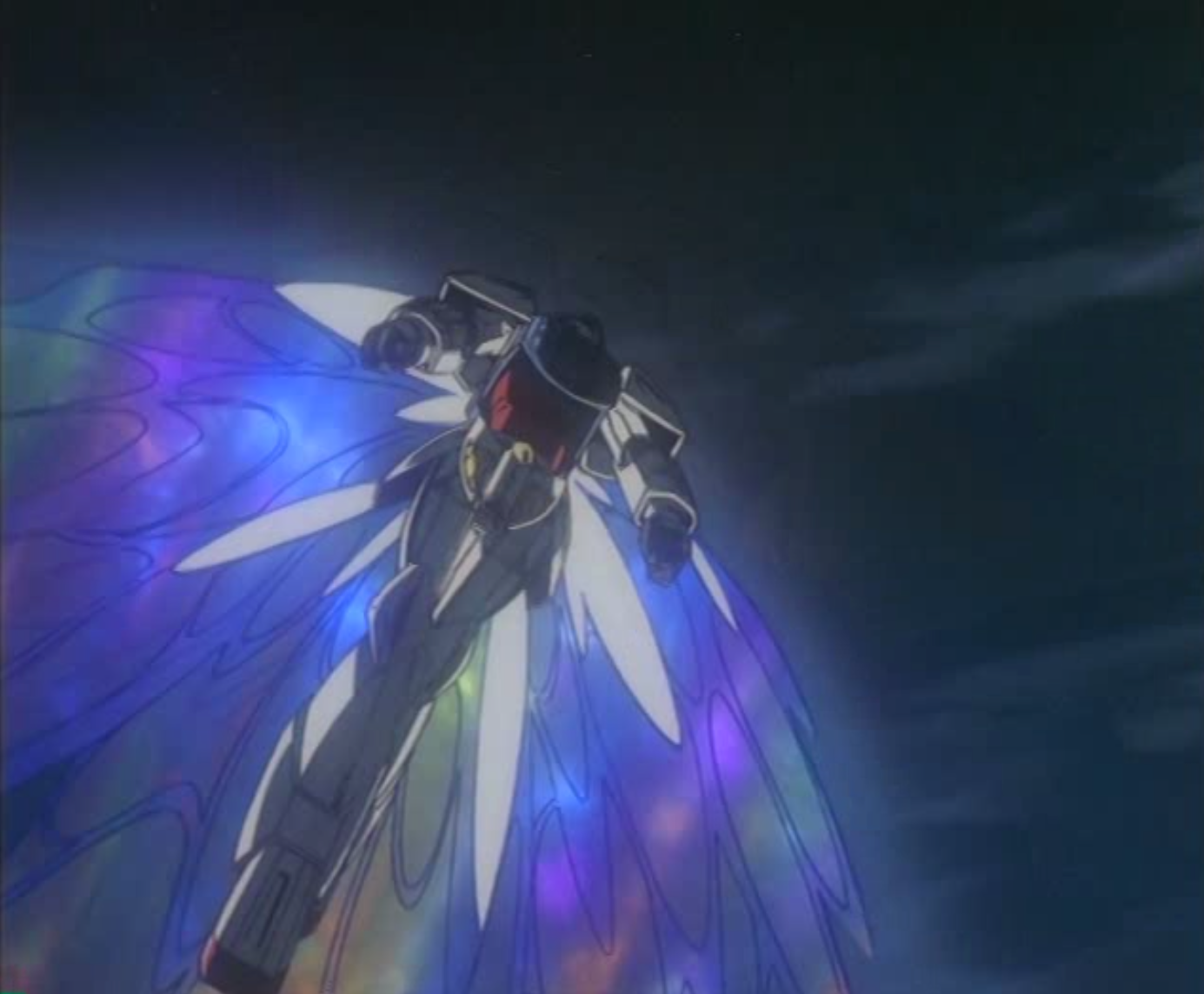
Gym, bred and raised to be a warrior for a nation (a nation on the moon, y’all!) now seeking peace, sees no future for a world not strengthened by conflict. Loran, a boy from that same culture and sent to Earth to determine if it was safe to return, has rejected war as a tool and is struggling to end it before it causes a return to the Dark History that shattered the world.
The battle resolves with the odd and beautiful image of the Turn A’s Moonlight Butterfly encasing not just both doomsday weapons, but the enemy pilot who sought to use them to destroy, in a cocoon where they can never harm people again.
Oh, and the whole thing is set to some wild choral music by the brilliant Kanno.
Murrue’s Archangel and Natarle’s Dominion (Gundam SEED)
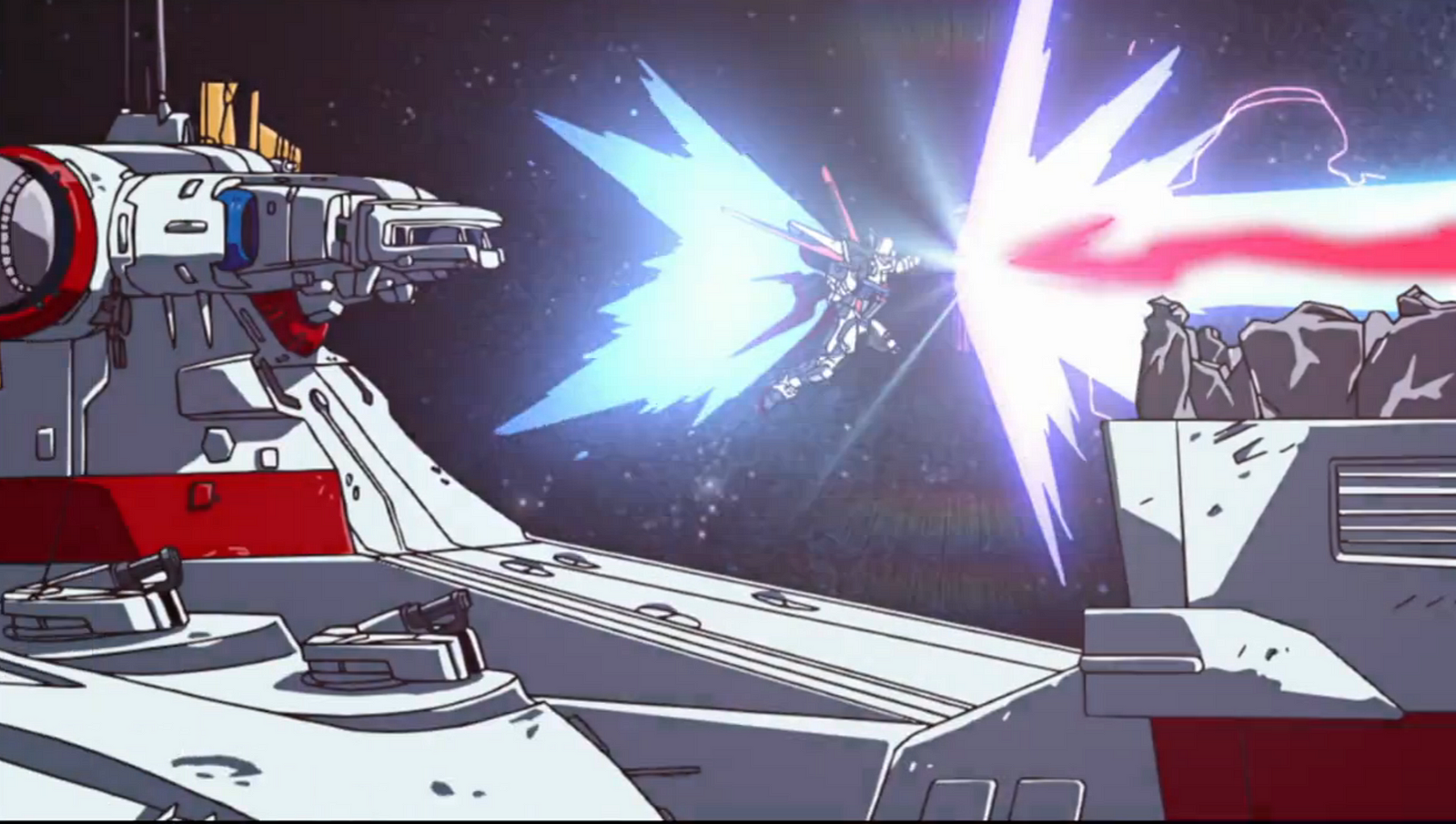
One thing Gundam never really got right was the naval side of its wars, the battle between the capital ships that seemed to only exist to transport and launch mobile suits. That changed in Gundam SEED, a shiny remix of the plot of 0079 that in many ways served to modernize the franchise a second time. While the mobile suit combat in SEED was some of the best in the franchise, the true stand-out is a clash between former friends, each now captaining a battleship on opposite sides of the war.
If you forced me to pick the best action sequence the series has ever laid down, I’d probably scream at you for being so mean, then sigh and pick this incredible clash between the Archangel and its sister ship the Dominion. There’s so much going on here, so many threads coming together, so many arcs reaching their conclusion, so many damn emotions happening all at once, it’s the model of how to make a final battle mean something.
In the early days of SEED, Murrue Ramius found herself thrust into the captaincy of the Archangel, with Natarle Badgiruel as her XO. The two quickly came into conflict as Murrue refused to follow orders from an increasingly unethical Earth military, and Natarle demanded they respect the chain of command. Eventually, they parted ways, and Natarle found herself in charge of the Dominion as war between Earth and the Colonies reached a head.
They met again in a desperate battle with both superpowers willing to launch doomsday attacks on the other, and the Archangel caught in the middle in its attempt to stop anyone from dying. As Murrue’s ship charges the ship carrying Earth’s nuclear weapon, Natarle is ordered to stop her, and finally experiences the same crises as her former commander: fight an immoral war, or ignore the orders of her superiors?

There’s just too many things happen to make sense of them all, but the resolution — Natarle refusing to fire on her friend’s ship, and going down with the Dominion in one of the bravest sacrifices you’ll see— is Gundam at its most emotionally rich. All of the great Gundam series use their final battles to bring character arcs to the fore, but this is the one that shows most clearly how successful action can be at resolving emotional conflicts.
That’s just the tip of the iceberg, too. I mean, I didn’t even get to 00 Gundam, and that’s my favorite thing in the whole franchise. But hey, the thing about 00 is that it’s a refinement of so much of what came before, so I’ll just consider this the groundwork for it, and leave the show for you to go and watch (or, if you’re like me, re-watch it).
If you’re out in the world, looking to write your grand blockbuster or action-packed novel, maybe give Gundam a look before you get cracking on those action scenes. You may find some inspiration in this bold, goofy, thoughtful franchise full of giant robots and emotionally conflicted pilots.


